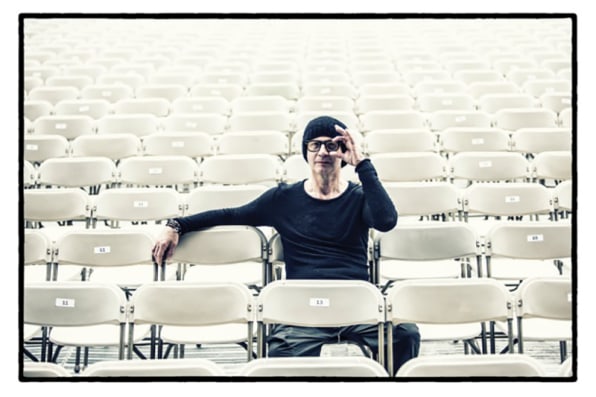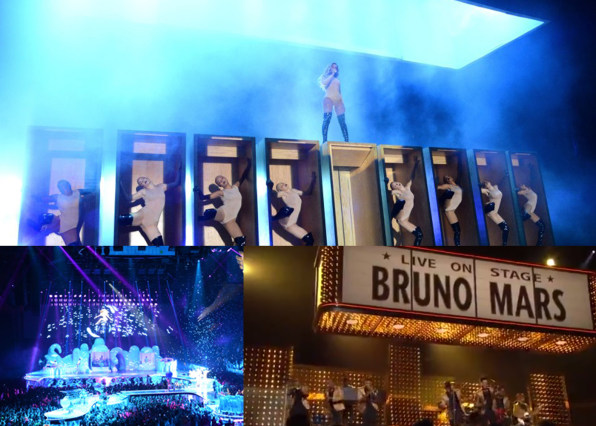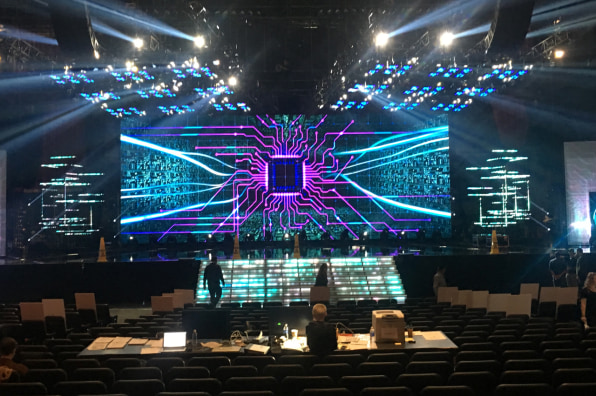Author: Mark Wilson
Date: December 4th, 2015
Publisher: Fast Company
Leroy Bennett explains how he designs stages for the greats, from Paul McCartney to Beyoncé.
You’ve probably never heard of LeRoy Bennett, but you know his customers: Bruno Mars, Nine Inch Nails, Madonna, Beyonce, Lady Gaga. For the past 30 years, Bennett has designed the lighting and set pieces for some of the biggest live acts in the world.

Tonight, you’ll see his latest work take stage at The Game Awards 2015, a video games award show for for which he created a super-high-contrast experience, with projectors shining through several layers of sets to make it look as if the digital world has come to life.
Co.Design caught up with Bennett to discuss the project, and learn how he manages to pull of what seems to be the greatest job in the world.

How do you approach a new stage?
My rules with any set design or production design on any show, concert or TV always revolve around the subject. It has to pertain to what the essence of that subject is, whether it’s an artist or a particular type of TV show. [But] I don’t like to ever be obvious about things. I prefer the audience to kind of make up and piece things together the way they believe it is.
Your work is basically abstract art. So how do you know a decision is the right decision?
A lot of it’s gut-based instinct. Music’s always been a very visual thing for me, since I was five years old. I grew up–mom was opera singer–so I heard lots of classical music. Father was an interior designer, so it all sort of made me who I am.
I can’t always explain what happens in the process. I can tell you practically why I’ve come out with the things I do, but at lot of it I can’t. It just comes out that way. I stand back and say, ‘Okay, it’s kind of working.’ It’s not like I go fearlessly, blindly into something. I know in my heart as I’m designing stuff exactly how it’s going to function and look.

What’s your methodology to actually designing a stage?
I always start off with the actual structure, the stage set, and what that is. Stage and lighting are totally aligned. One affects the other. So I start with a structure first, and while I’m doing that, thinking how is this going to light, where are the lights going in that. I start layering on the lights, which is another big thing. I like a sense of depth and transparency. You have to take the audience on a journey without beating them over the head with it.
When you start to build it, you have a vision of what it is, in a broad strokes sense, but once you get into rehearsal, physically, you say, ‘I understand the personality, but it has more to it.’ You start to really see all its potential. And that’s when it’s fun.
When I present any design to any client, I present it in a way that they can see as much as they can…and then I say, ‘But, there’s a lot more to this than you realize.’ They look at me like, ‘What?’–tilted dog head there–‘What are you thinking?’ I say, ‘Just trust me.’ Then they walk in and start to see it, and then it’s, ‘Oh my god, I didn’t realize it was like this!’
It’s fun that way. I build [stages] because I like multiple personalities, because every artist has songs that are multiple emotions. Happy songs. Sad songs. Cinematic songs. You have to build a show that flows that way, so you’re not seeing the same thing. Every song is its own story. You have to basically stimulate and take the audience on a journey without beating them over the head with it.
Comments:
LeRoy designs and creates some of the most elaborate stage designs and fashion show designs, and I think he could really utilize a large-scale 3D printer to help produce his visions.
You could also be able to customize different shoes for different cities and performances. I think the ability to design a set on a computer and then just print it out will allow for imagination to run wild and even bigger and better concert venues will come out of it. 3D printing these props also can lead to more immersive fan experiences, which everybody is is hoping for nowadays. Working tandem with light and set designers will allow for all new experiences for venue goers.




